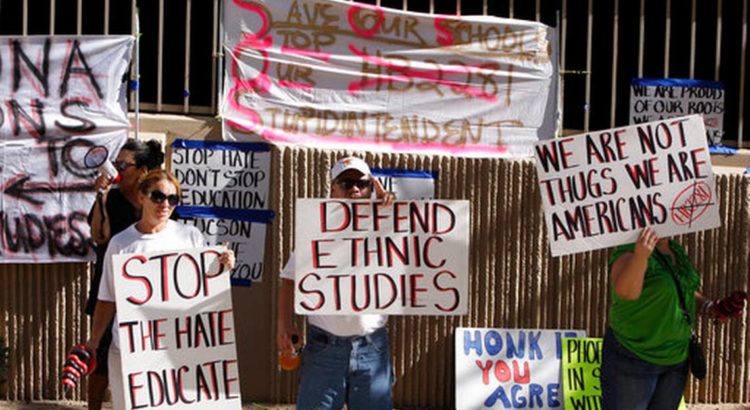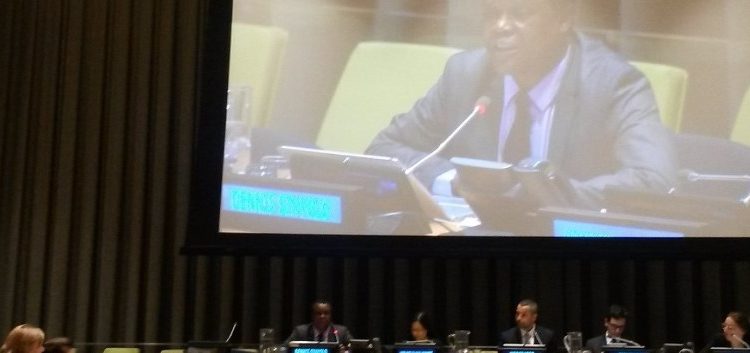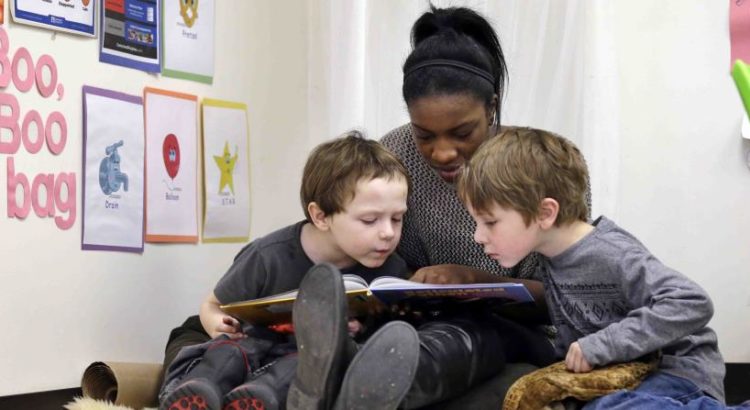Por: Internacional de la Educación.
La educación tendría que ser la base del nuevo Pacto Mundial sobre Migración, según la Internacional de la Educación, que incidió en la importancia de contar con un enfoque migratorio que tenga en cuenta a toda la sociedad en un ámbito local y nacional.
Los estados miembros de la ONU y, de hecho, todos los gobiernos, están obligados a garantizar los derechos humanos de todos los migrantes. Es lo que afirmó Dennis Sinyolo, de la Internacional de la Educación (IE), a lo que añadió que «dichos derechos se resumen en los pactos y tratados de Naciones Unidas (ONU) actuales».
Sinyolo realizó estas declaraciones en el marco de un panel sobre perspectivas nacionales para un enfoque que abarque a toda la sociedad y facilite un movimiento migratorio seguro, ordenado y normal. El panel tuvo lugar durante unas sesiones informales con varias partes interesadas previas a la reunión del Pacto Mundial sobre Migración y la conferencia intergubernamental sobre migración internacional. Se celebró el 18 de diciembre en la sede de Naciones Unidas (ONU) en Nueva York, Estados Unidos.
En la sesión, los participantes tuvieron la oportunidad de debatir sobre la necesidad de cooperación y alianzas entre diferentes segmentos de la sociedad, incluida la sociedad civil, el sector privado, comunidades en la diáspora, migrantes, autoridades locales y nacionales, expertos y otros implicados para desarrollar y poner en práctica un enfoque sobre migración coherente y que abarque al conjunto de la sociedad.
El Presidente de la Asamblea General de la ONU, Miroslav Lajcak, explicó: «Estamos aquí para analizar cómo afecta la migración a las autoridades locales. Queremos ir más allá del ámbito nacional y revisar ejemplos de buenas prácticas en un entorno local y de cómo los migrantes contribuyen a las comunidades locales, por ejemplo, a través de sus destrezas».
El proceso de negociación intergubernamental sobre el Pacto Mundial, como recordó a los presentes, se iniciará en febrero de 2018, y exige que «se escuche a numerosas partes diferentes, especialmente a quienes aplican leyes y políticas migratorias, como enfermeras, docentes y agentes de las fuerzas de seguridad».
Por otra parte, subrayó que no hay mejor forma de celebrar el Día Internacional del Migrante que presentar propuestas sobre cómo tratar los retos que les afectan. También destacó la necesidad de basarse en un enfoque que tenga en cuenta a toda la sociedad y el gobierno, además de escuchar a todos los implicados.
Diálogo social
El punto de partida para garantizar un enfoque efectivo que llegue al conjunto de la sociedad a la hora de gestionar la migración presenta dos vertientes, según explicó Sinyolo:
(1) Todos los gobiernos, incluidos los de países de acogida y tránsito, deberían ratificar e implementar por completo las disposiciones de la ONU y la Organización Internacional del Trabajo (OIT) sobre migración, empleo y otros acuerdos relevantes.
(2) Los gobiernos deberían garantizar el establecimiento de mecanismos institucionalizados para el diálogo social.
También resulta de vital importancia llevar a cabo una consulta y un diálogo reales con los trabajadores migrantes a través de las organizaciones que los representan, los sindicatos en particular, dado que la mayoría de los migrantes se desplazan en busca de un trabajo decente, señaló.
La lucha y las acciones que llevan a cabo los sindicatos, la sociedad civil y otros agentes tampoco se deben subestimar, añadió Sinyolo. Estas organizaciones se han esforzado mucho para garantizar que no se niegue a los migrantes el acceso a las necesidades vitales y servicios públicos básicos, como la salud, la educación y la justicia, por su condición migratoria.
IE: Defender los derechos educativos de migrantes y refugiados
La Internacional de la Educación ha estado trabajando con sus afiliadas nacionales, organizaciones juveniles y comunidades estudiantiles y locales para defender y fomentar los derechos educativos de migrantes y niños y jóvenes refugiados en varios países europeos y de fuera de Europa, según manifestó Sinyolo.
Los educadores y sus sindicatos llevan mucho tiempo luchando para que los niños indocumentados tengan derecho a una educación de calidad y cuestionando su detención en campos de refugiados, afirmó. La IE también ha proporcionado formación y un desarrollo profesional a docentes locales, migrantes y refugiados para que puedan adaptarse a las necesidades específicas de los migrantes y refugiados, incluido apoyo psicosocial y formación lingüística.
«La educación es el mayor antídoto ante el azote de la xenofobia, el racismo y la discriminación, ya que ayuda a inculcar y fomentar los valores del entendimiento intercultural, el respeto, la tolerancia y la coexistencia pacífica». De hecho, la educación dota a migrantes y niños y jóvenes refugiados de las destrezas necesarias en su vida y trabajo, declaró, además de enfatizar que este aspecto debería ser una parte fundamental del nuevo Pacto Mundial.
«Un enfoque que implique al conjunto de la sociedad solo se puede alcanzar si todos los países y gobiernos dan un paso al frente en la creación de un entorno que acepte a los refugiados, tanto en el plano legislativo como socioeconómico», indicó. «Necesitamos tomar medidas inteligentes y significativas para avanzar, y que nadie las ignore o se haga a un lado, porque la gestión mundial de la migración es un esfuerzo mutuo que atañe a los países de partida, tránsito y destino».
Para finalizar, recordó la necesidad de que la ONU y los gobiernos sigan contando con sindicatos y sociedad civil en el proceso de negociación intergubernamental, hecho que motivó la respuesta por parte del Presidente de la Asamblea General de la ONU, que anunció que convocará dos sesiones/consultas más en febrero y mayo de 2018.
Fuente: https://www.ei-ie.org/spa/detail/15621/la-educaci%C3%B3n-debe-ser-fundamental-en-la-pol%C3%ADtica-migratoria
Imagen: https://www.ei-ie.org/resources/views/admin/medias/timthumb.php?src=https://www.ei-ie.org/media_gallery/original_687a3.jpg&w=1200&h=530&zc=1


















 Users Today : 7
Users Today : 7 Total Users : 35460680
Total Users : 35460680 Views Today : 13
Views Today : 13 Total views : 3419795
Total views : 3419795